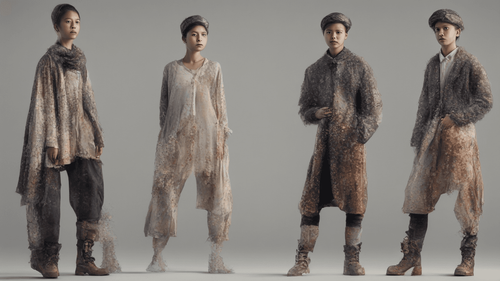
Introduction
In the era of rapid technological advancements, the convergence of art and artificial intelligence has paved the way for groundbreaking creative expressions. Imagine the ability to take an ordinary photograph and transform it into a captivating piece of art through the power of AI. This article delves into the exciting world of turning images into AI art, exploring the process, techniques, benefits, and frequently asked questions.
Understanding the Process
What is AI Art?
AI art, also known as neural art or algorithmic art, refers to the process of using artificial intelligence algorithms to manipulate and transform images into unique artistic interpretations. It's a marriage of human creativity and machine learning, resulting in mesmerizing visuals that challenge traditional artistic boundaries.
How Does AI Turn Images into Art?
At the heart of this process lies deep learning, a subset of AI that involves training algorithms on massive datasets to recognize patterns and generate creative outputs. When you feed an image into an AI art algorithm, it analyzes the image's features, styles, and textures. The AI then combines these elements with the desired artistic style to produce a stunning piece of AI-generated art.
The Steps to Create AI Art
Step 1: Selecting the Image
Begin by choosing the image you wish to transform. It could be a photograph you've taken, a painting, or any visual that sparks your creative inspiration.
Step 2: Choosing the Style
Select the artistic style you want the AI algorithm to apply to your image. This could range from famous art movements like Impressionism to unique contemporary styles.
Step 3: Applying the Algorithm
Use AI-powered platforms or software to apply the chosen algorithm to your image. These platforms utilize complex neural networks to analyze the content of your image and merge it with the selected style.
Step 4: Fine-Tuning the Result
After the initial transformation, you can make manual adjustments to refine the AI-generated artwork. This allows you to add a personal touch and align the artwork with your vision.
Benefits of Turning Images into AI Art
Unlocking Creativity
AI art provides a canvas for both seasoned artists and individuals with limited artistic background to experiment with new styles and unleash their creativity.
Preserving Memories in Artistic Form
Transforming personal photos into AI art offers a unique way to capture memories in visually captivating and emotionally resonant forms.
Exploring Art Movements
By applying various artistic styles to different images, you can explore the nuances of various art movements and their visual impact.
Enhancing Visual Marketing
Businesses can leverage AI-generated art for marketing campaigns, creating attention-grabbing visuals that stand out in a crowded digital landscape.
Revitalizing Public Domain Art
AI can be used to breathe new life into public domain artworks, generating modern adaptations that introduce classic pieces to new audiences.
Challenges and Considerations
Balancing Authenticity and Novelty
While AI-generated art is exciting, artists often grapple with finding the right balance between creating something unique and preserving the authenticity of their work.
Ethical Implications
The rise of AI art has sparked discussions about copyright, authorship, and the ethical implications of using algorithms to create art.
Technical Learning Curve
Mastering the intricacies of AI art platforms and software may require a learning curve, especially for those new to the realm of artificial intelligence.
FAQs
How Does AI Turn a Photo into Art?
AI uses deep learning algorithms to analyze the features of an image and apply the chosen artistic style, resulting in a transformed artwork.
Can I Add My Own Touch to AI-Generated Art?
Absolutely. Many platforms allow you to fine-tune the AI-generated art, adding your personal creative touch to the final piece.
Is AI Art Authentic Art?
Yes, AI art is a legitimate form of artistic expression that combines human creativity with algorithmic processes.
Are There Legal Concerns with AI Art?
The legal landscape around AI art is still evolving. It's important to understand copyright laws and permissions when using AI-generated art commercially.
Can AI Art Replicate Famous Artists' Styles?
Yes, AI algorithms can be trained to mimic the styles of famous artists, producing artworks that resemble the works of historical masters.
How Can Businesses Use AI-Generated Art?
Businesses can incorporate AI-generated art in branding, marketing materials, and product design to create visually appealing and memorable content.
Conclusion
In the world of art, technology continues to push boundaries, redefining creativity and innovation. Turning images into AI art is a fascinating journey that merges the human spirit with the capabilities of artificial intelligence. From transforming personal memories to exploring art movements, the possibilities are endless. As AI algorithms continue to evolve, we can only imagine the breathtaking art they will help us create in the future.